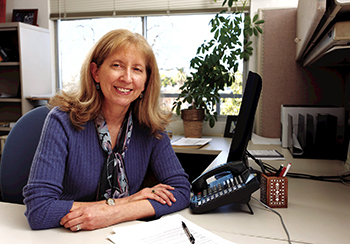Medi-Cal patients in Yolo County have better access to primary care than patients in nearby counties, new research from UC Davis Health policy experts shows.
 Joy Melnikow has led a study on differences in access to primary care in eight Northern California counties.
Joy Melnikow has led a study on differences in access to primary care in eight Northern California counties.
The results also show that in counties where primary care access was worse — Sacramento, San Joaquin and Solano — emergency department visits were higher.
The study is published in the current issue of the Annals of Family Medicine. It was led by Joy Melnikow, professor of family and community medicine and director of the Center for Healthcare Policy and Research at UC Davis.
"We know there are gaps in access to primary care that are greater for those with Medi-Cal health insurance," Melnikow said. "Our study is believed to be the first to consider how access varies by county in our region."
The researchers began by placing scripted calls from July through August 2015 to request new-patient appointments with nearly 600 primary care providers in El Dorado, Placer, Sacramento, San Joaquin, Solano, Sutter, Yolo and Yuba counties. All of the providers were identified by Medi-Cal managed care plans as accepting new patients. That information was then combined with region-level California Health Interview Survey data on the number of Medi-Cal patients in need of primary care providers. They were then able to develop new-appointment access ratios for each county.
County rankings for primary care access
The ratios generated primary care access rankings by county, with Yolo at the top and Sacramento, San Joaquin and Solano at the bottom. Placer, Sutter, Yolo and Yuba ranked in the middle.
The researchers noted, however, that primary care access wasn't ideal in any of the counties. On average, only 19% of providers accommodated new-patient requests within the state-required timeframe of 10 business days.
They also were surprised by the range of access differences by county. Appointments with requested providers (with no time limit) were available between 23% and 50% of the time. Appointments with any provider in the same practices were available between 36% and 76% of the time.
Emergency department overuse and primary care access
Another analysis using data from the California Office of Statewide Health Planning and Development showed that emergency department visits by Medi-Cal patients were highest in the counties where primary care access was lowest. It's possible, according to Melnikow, that this is due to primary-care related emergency department use, contributing to emergency department overuse and higher health care costs.
The study strongly suggests that steps need to be taken to ensure access to primary care across counties.
— Joy Melnikow
"Primary-care access has been shown to improve health care quality and patient outcomes while reducing costs," Melnikow said. "There needs to be more accountability at the state level to confirm access to primary care for all Medi-Cal enrollees, regardless of the counties they live in."
Melnikow's colleagues on the study were Guibo Xing, Shauna Durbin, Dominique Ritley of UC Davis; Ethan Evans of CSU Sacramento; Brock Daniels of Cornell Medical College; and Lindsey Woodworth of University of South Carolina.
Their work was funded by the Agency for Healthcare Research and Quality, UC Davis Department of Family and Community Medicine, and U.S. Department of Health and Human Services.
The study, titled "Primary Care Access to New Patient Appointments for California Medicaid Enrollees: A Simulated Patient Study," is available onine.






